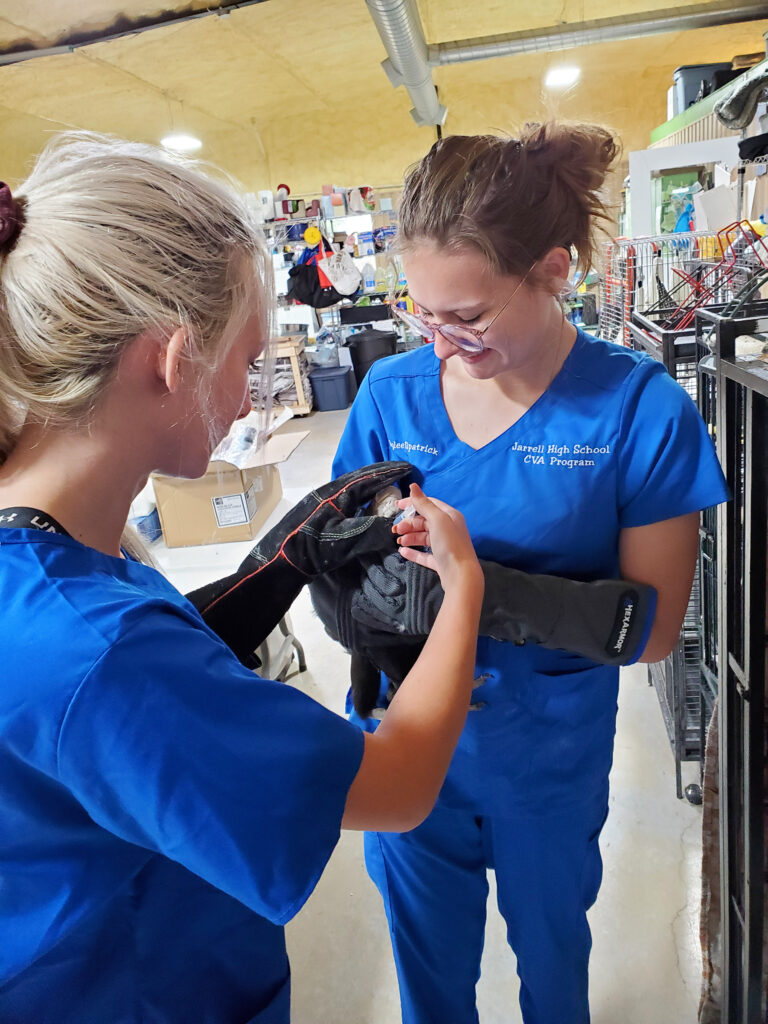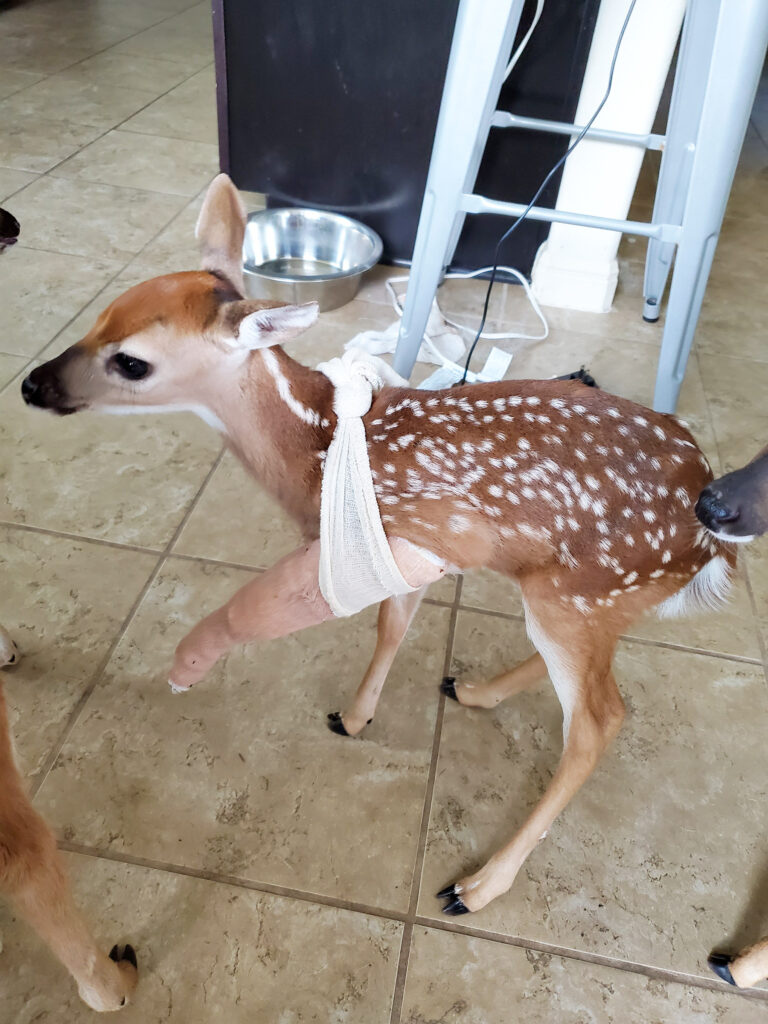photos courtesy Kaela Jones
At times, life at a wildlife rehabilitation center is getting up in the middle of the night to bottle feed a newborn animal. Other times, it’s teaching one more person who brings in an opossum, “Yes, they look scary and have more teeth than most mammals in the U.S., but they’re docile, and they hunt snakes, roaches, rats, and mice,” says Kaela Jones, animal care director at All Things Wild Rehabilitation.
From educating the community about misunderstood marsupials to preparing animals to return to their natural habitats, All Things Wild is “100 percent a labor of love” for employees and volunteers who team up to rescue and rehabilitate sick, injured, orphaned, and displaced wildlife.
THE WILDLIFE LIFE

In 2012, Helen Laughlin left Austin Wildlife Rescue to start her own wildlife rehabilitation center in Georgetown alongside a group of fellow animal lovers. Today, the nonprofit organization feeds and provides medical care for an annual menagerie of 3,000 animals—porcupines, armadillos, deer, pigs, bobcats, raptors, skunks, bats, snakes, and everything in between.
Kaela remembers one coyote her team rallied behind to get back on her paws. When Miss Wiley was brought to All Things Wild, one of her legs was so mangled by a trap that rehabilitators weren’t sure they would be able to save her. But, “we worked so hard to keep Miss Wiley alive, and she fought so hard to stay alive.” After they had to amputate her leg, Miss Wiley’s chances of being released dropped significantly. “For a long time, we reached out to zoos, sanctuaries, feral dog rescues, anything that would allow her to carry on her life. We became attached and to watch her shift as we helped was incredible. To gain the trust of an animal that we all still held such a respectful fear for was a once in a lifetime deal.” Miss Wiley is now on her way to being released by a wildlife rescue in San Antonio.
A FOREVER HOME
Those unable to return to their natural habitat find a new home at All Things Wild as educational ambassadors that visit classrooms, scout groups, churches, and service organizations to raise awareness of the positive impact wildlife has on the environment and to show how we can peacefully coexist with the animals around us. “A lot of human intervention steps on wildlife’s toes,” Kaela says, adding while “people see wildlife as destructive, we like to highlight the positive things they do in the environment.”

COMFORT AND NURTURE
Animal lovers interested in donating their time can scan the code to learn more about becoming a volunteer. All Things Wild Rehabilitation is 100 percent donor funded so people can also support the organization online or choose All Things Wild as their Amazon Smile organization to receive a small percentage of their online purchases.
“To go from infant to eating on their own to moving into the outdoor enclosures—getting to watch them through that whole process. Going on releases and seeing babies you’ve raised that you have a bond with, you literally not only saved their life but raised them from nothing.” ~Kaela Jones
